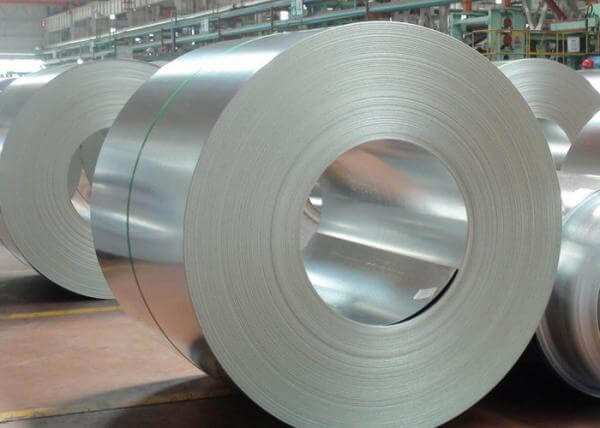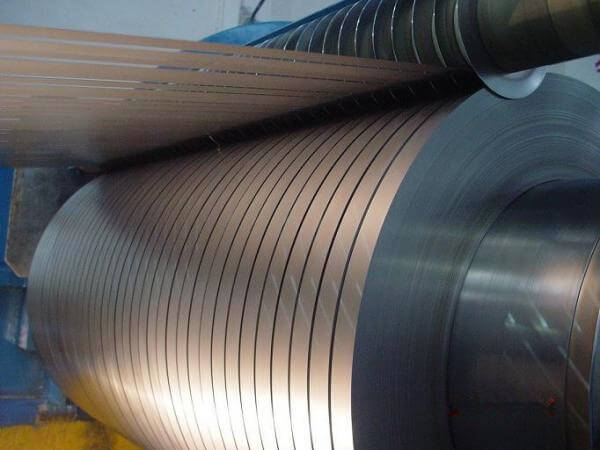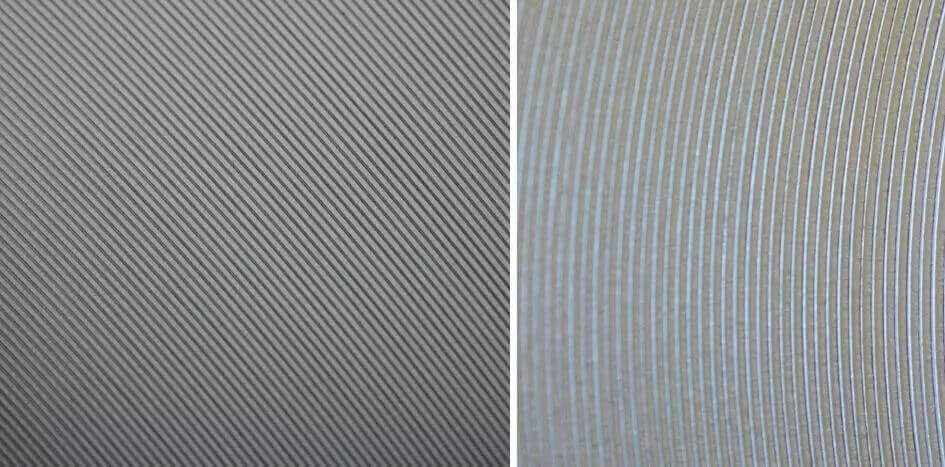
Stainless steel strip is a thin-thickness flat sheet in narrow and long rolls, typical thickness is between 0.1mm-3mm. According to different grades, processing technology, surface treatment and other factors, stainless steel strips can be divided into various types. Stainless steel grades mainly include 304, 304L, 316, 316L, 321, 2205, S31803, 310S, 904 and other grades.
Stainless steel strip can be treated in standard and special surface finishes, such as 2B, 2D and BA finish. Our value-added service capabilities for stainless steel strips and coils include slitting, polishing, shearing, stretcher leveling, blanking and metallurgical support.
Stainless Steel Strip Coil Specifications
| Grades | 304/304L (1.4301/1.4307), 316/316L (1.4401/1.4404), 409 (1.4512),AISI420 (1.4021), 430 (1.4016),AISI439 (1.4510), 441 (1.4509) |
|---|---|
| Production | Cold Rolled Hot Rolled |
| Standard | ASTM A240m, ASTM A480 EN 10088-2 |
| Thickness | Min: 0.4mm, Max: 10.0mm |
| Width | 1000mm,1250mm,1500mm,2000mm, Min Width: 8 Mm, Other Sizes On Request, Width Tolerance: 0 – 0.1 Mm |
| Finish | 1D, 2B, BA, No4, No6, No7, HL, No8 |
| Package | Spool Wooden Pallet |
| Application | Medical Equipment, Food Industry, Construction Material, Kitchen Utensils, BBQ Grill, Building Construction, Electric Equipment, |

Advantages
- Complete product specifications and diverse materials
- High dimensional accuracy, up to ± 0.1mm;
- Excellent surface quality and good brightness;
- It has strong corrosion resistance, high tensile strength and fatigue resistance;
- Stable chemical composition, pure steel, and low inclusion content;
- The packaging is intact and the price is favorable;
- Non-standard customization possible
SS Strip Specifications
ASTM A240 Strip
Standard Specification for Chromium and Chromium-Nickel Stainless Steel Plate, Sheet, and Strip for Pressure Vessels and for General Applications. The steel shall conform to the requirements as to the chemical composition specified. The material shall conform to the mechanical properties specified.
ASTM A480 Strip
Standard Specification for General Requirements for Flat-Rolled Stainless and Heat-Resisting Steel Plate, Sheet, and Strip. The steel shall be made by one of the following processes: electric arc, electric induction, or other suitable processes. Heat and product analyses shall conform to the chemical requirements for each of the specific elements. The material shall undergo mechanical tests such as tension test, hardness test, and bend test. Special tests like intergranular corrosion test, permeability test, Charpy impact testing and tests for detrimental intermetallic phases in wrought duplex stainless steels shall also be performed when required.
Stainless Steel Grades
There are over 150 stainless steel grades for use in many industries, due to the excellent properties of stainless steel, high strength resistance and corrosion resistance are key properties, meanwhile, stainless steel has multiple benefits, durable material, easy to fabricate and low maintenance.
Material is available in austenitic stainless steel, ferritic stainless steel, duplex steel and martensitic stainless steel grades, Austenitic is the most widely used stainless steel group. Stainless steel slit coil is provided in 200, 300, 400, and PH grades. stainless steel service center slits stainless coil to precision tolerances.
- Austenitic: 304, 304L, 316, 316L, 316H, 316Ti, 317/317L, 347/347H, 321/321H, 310/S, 904L, 254SMO
- Ferritic: 409, 430, 439, 441, 434, 436, 444, 446
- Martensitic: 403, 410, 410S, 414/L, 418, 420, 440, 416
- Duplex: 2205, S31803, S32750, S32760
Common stainless steel grade’s chemical composition
| Grade | C | Si | Mn | P | S | Cr | Ni | Mo |
|---|---|---|---|---|---|---|---|---|
| 304 | ≤.080 | ≤1.00 | ≤2.00 | ≤.045 | ≤.030 | 18.00-20.00 | 8.00-10.50 | |
| 304L | ≤.030 | ≤1.00 | ≤2.00 | ≤.045 | ≤.030 | 18.00-20.00 | 8.00-12.00 | |
| 316 | ≤.080 | ≤1.00 | ≤2.00 | ≤.045 | ≤.030 | 16.00-18.00 | 10.00-14.00 | 2.00-3.00 |
| 316L | ≤.030 | ≤1.00 | ≤2.00 | ≤.045 | ≤.030 | 16.00-18.00 | 10.00-14.00 | 2.00-3.00 |
| 321 | ≤.080 | ≤1.00 | ≤2.00 | ≤.045 | ≤.030 | 17.00-19.00 | 9.00-12.00 | |
| 409 | ≤.080 | ≤1.00 | ≤1.00 | ≤.040 | ≤.030 | 10.50-11.75 | ≤.500 | |
| 409L | ≤.030 | ≤1.00 | ≤1.00 | ≤.040 | ≤.030 | 10.50-11.75 | 0.5 | |
| 430 | ≤.120 | ≤1.00 | ≤1.00 | ≤.040 | ≤.030 | 16.00-18.00 | ─ |
Common stainless steel Mechanical Property
| Steel Grade | Tensile Stress (N/mm2 MIN.) | Proof Stress (N/mm2 MIN.) | Elongation (%MIN.) | Hardness HRB MAX. |
|---|---|---|---|---|
| S30100 | 515 | 205 | 40 | 95 |
| S30400 | 515 | 205 | 40 | 92 |
| S30403 | 485 | 170 | 40 | 92 |
| S31008 | 515 | 205 | 40 | 95 |
| S31603 | 485 | 170 | 40 | 95 |
| S32100 | 515 | 205 | 40 | 95 |
| S41000 | 450 | 205 | 20 | 96 |
| S43000 | 450 | 205 | 22 | 89 |
| S43932 | 415 | 205 | 22 | 89 |
304 Stainless Steel Strip
This type of stainless steel is the most widely used of the austenitic stainless steels and Chromium-Nickel. Its corrosion resistance is higher than 302, and its Carbon content is low. In its hardened state, Type 304 is non-magnetic and becomes slightly magnetic when cold-worked.
316L Stainless Steel Strip
Other widely used austenitic steel are 316 and 316L stainless steel, the corrosion performance of SS 304 is not enough, so 316L is often considered as the first alternative. The higher Nickel content in 316 and 316L over SS 304 and the Molybdenum addition in 316 and 316L give it an edge in performance in corrosive and high-temperature environments.
430 Stainless Steel Strip
This type of stainless steel is ductile and is fabricated by bending, pressing, drawing and heading. Type 430 stainless steel has less corrosion resistance than Chromium-Nickel steel.
This type of steel is suitable for many interior applications; things such as architectural and decorative household appliances and automotive body trim. Type 430 is the most popular of all straight Chromium stainless steels.
201 Stainless Steel Strip
201 stainless steel strip is mainly composed of 17% chromium and 4.5% nickel, compared with 304 stainless steel belt and 316 stainless steel belt, its corrosion resistance is poor, but has excellent processing performance and toughness, so it is widely used in the production of pipelines, cables and so on.
420 Stainless Steel Strip
The main component of 420 stainless steel strip is chromium, its strength and hardness are high, good wear resistance, usually used for making knives, watch clasps and so on.
Stainless Steel Strip Sizes
| Surface Finish | Thickness (Mm) | Width (Mm) |
|---|---|---|
| 2B – Cold Rolled, Heat Treated, Pickled, Skin Passed | 0.3 – 6.0 | Max. 2032 |
| 2D – Cold Rolled, Heat Treated, Pickled | 0.4–6.35 | Max. 1524 |
| No.1 – Hot Rolled, Annealed, And Descaled | 0.4–8.0 | Max. 2032 |
| BA – Cold Rolled, Bright Annealed | 0.25–3.5 | Max. 1524 |
| Polished, Brushed | 0.5–4.0 | Max. 1524 |
Stainless Steel Strip Thickness

- 1 mm stainless steel strip
- 2 mm stainless steel strip
- 3 mm stainless steel strip
- 4 mm stainless steel strip
- 5 mm stainless steel strip
- 6 mm stainless steel strip
- 8 mm stainless steel strip
- 10 mm stainless steel strip
- 12 mm stainless steel strip
- 14 mm stainless steel strip
- 16 mm stainless steel strip
- 18 mm stainless steel strip
- 20 mm stainless steel strip
For special grades, stainless steel coil thickness ranges are described below.
| Grades | Thickness (Mm) |
|---|---|
| 2206 S31803 | 1 – 60 |
| 2507 S32750 | 3 – 30 |
| 317L | 3 – 20 |
| 904L N08904 | 1.5 – 10 |
| 254 SMO | 2 – 20 |
Coil Slitting
Coils are further processed using a range of manufacturing techniques such as slitting, where the wide coil is slit into a multitude of strands; this is where much of the confusion around the terminology comes in. After slitting, the stainless steel forms a batch of coils taken from the mother coil and these are referred to by many different names, including strip coils, slit coils, banding, or simply strips.
Striping processing, commonly known as “slitting “, refers to the winding of a metal coil by unwinding, slitting, leveling, winding, and processing into a desired width. Slitting processing is a basic metal processing technology combining high-quality equipment and skilled craftsmanship. it can be obtained with strict tolerance, perfect surface control, safe packaging, and fine transportation.
Stainless steel rolling mills reduce coils to various thicknesses and widths. Once arriving at the desired thickness the coil is then slit-to-width through a process known as steel coil slitting.
Steel coil slitting is a metal-cutting process where large rolls or sheet metal coils are cut using very sharp rotary blades. They are cut lengthwise into the large coil to achieve straight lines, creating narrower strips. Circular blades are responsible for making the cuts as the coil runs through the slitter.
The production process of stainless steel strip
- Rolling processing: the raw material coil is fed into the rolling mill for rolling processing, which becomes a steel strip with specified size and thickness requirements.
- Heat treatment: the rolled stainless steel strip for heat treatment, so that it has good mechanical properties and toughness.
- Surface treatment: mechanical polishing, chemical polishing, electrochemical polishing, covering the protective film and other ways, so that the surface of the steel strip has a good finish and corrosion resistance.
- Finished product production: after rolling and surface treatment of stainless steel strip according to different uses for shearing, bending, stamping and other forming processes, and finally made into different types of stainless steel strip.
Cold Rolled Stainless Steel Strip
Cold Rolled Stainless Steel Strip is a strip manufactured by cold rolling process. Compared to hot-rolled stainless steel strips, cold-rolled strip has a higher surface finish and better dimensional accuracy. In addition, cold rolled stainless steel strip has better strength and hardness because it is cold treated. Cold Rolled Stainless Steel Strip is widely used in the manufacture of various parts and assemblies, such as electronic components, medical devices, scales, etc.
Hot Rolled Stainless Steel Strip
Hot Rolled Stainless Steel Strip is a stainless steel strip manufactured through the hot rolling process. Compared to cold-rolled stainless steel strips, hot-rolled strip has higher plasticity and toughness. The hot-rolled stainless steel strip is usually used to manufacture a variety of large parts and structural components, such as large containers, pressure vessels, building structures and so on.
Stainless Steel Strip Processing
- Shearing: Shearing is the use of cutting machinery to cut stainless steel strip to a certain size.
- Curling: Curling is bending the stainless steel strip into an arc or other shapes.
- Embossing: Embossing is embossing the surface of the stainless steel strip into various patterns through molds.
- Punching: Punching is to stamp out various shapes of holes on the stainless steel strip.
- Bending: Bending is to bend the stainless steel belt according to a certain angle and shape.
- Stretching: Stretching is to stretch the stainless steel strip into a certain shape and size of the product through the mold.
- Welding: Welding is welding the stainless steel belt, commonly used in the connection of stainless steel strip.
- Polishing: Polishing is to polish the surface of the stainless steel strip to make its surface smooth and bright.
- Pickling: Pickling is to pickle the stainless steel strip to remove the oxide skin and dirt on the surface.
- Plating: Plating is to coat the surface of a stainless steel strip with a layer of metal or non-metallic material to increase corrosion resistance, abrasion resistance or decorative properties.
How to Bend Stainless Steel Strip
The hot bending method involves heating the stainless steel strip to a plastic state and then bending it using a mold or manual operation. This method is suitable for thicker stainless steel strips as the heating reduces the hardness of the material, making it easier to deform. During the operation, it is necessary to ensure that the heating is even and avoid overheating, which may damage the material. The hot bending method is suitable for situations where a larger bending radius is required, as it provides a better bending effect.
The cold bending method involves bending the stainless steel strip at room temperature, which is usually carried out using a press brake or bending machine. This method is suitable for thinner stainless steel strip because the material is softer and easier to deform when cold bending. The advantage of the cold bending method is that it is simple and efficient, and is suitable for mass production. However, the disadvantage of the cold bending method is that the bending radius is small and may not be suitable for all application scenarios.
When performing the bending operation of stainless steel strip, the tensile strength and ductility of the material also need to be considered to ensure that there is no fracture or uneven deformation during the bending process.
